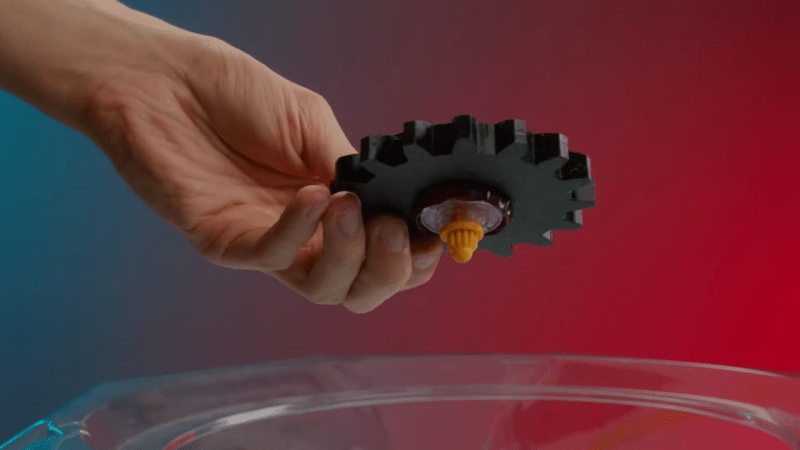When Beyblades first came out a couple of decades ago, they quickly became a fad across Japan and several Western countries. There was a whole ecosystem of parts that you could buy and use to build competitive fighting spinning tops. These days, though — 3D printers are ubiquitous. There’s very little stopping you from printing whatever Beyblade-compatible parts your heart desires, as [JettKuso] demonstrates.
For [JettKuso], the rubber attack tips were a personal favorite. They had high grip on the plastic arena floor and would allow a top to make rapid, aggressive moves that would knock other tops out of the arena. Not desiring to import specific Beyblade parts at great expense, he decided to print some rubber tips and associated parts instead. The result? Squishy Beyblades!
[JettKuso] built various tops with official and custom TPU parts, and put them in battles to see what worked and what didn’t. In many cases, the TPU replacement parts didn’t make a big difference or proved worse than the standard parts. However, when [JettKuso] got crazy, he found one thing that kind of worked. A mega-heavy TPU top blade, which weighed as much as the standard metal rings, was able to successfully win battles against less competitive standard builds.
Ultimately, the video serves as a testament to the developers of the original toys themselves. It’s not so simple to just print up some parts and have them be competitive with the tried-and-tested gear that comes off the store shelves. The experience ultimately gave [JettKuso] a greater appreciation for all the thought that went into the commercial toys. Video after the break.















this post needs a lot of duckduckgoing.
Wow … super annoying salesmanship voice in the video. Was able to take about 3 min of it.
agree. the shtick got old fast.
The key to a good beyblade is a depleted uranium core
You jest but Takara Tomy just dropped a CX-series lock chip made of metal (zamak).
lock chip in ABS: ~1.5g
lock chip in ZAMAK: ~5g
theoretical lock chip in DU: ~14g
oh also the lock chip shape is designed for casting. So the theoretical machine shop needs a 5-axis CNC for this theoretical DU chip.
*4-axis
this is pretty fun. I didn’t expect Gear Flat to get better. I’d try Kick. First though, I should test the coefficient of friction on my filament. “High speed” is usually stiffer on the outside of the filament, soft on the inside.
I must criticize his testing though. I test Beyblade X competitive meta builds. Beyblade X testing really needs 2 people. Single player testing is only suitable for stamina matchups, which tend to fall to the center and play out the same. It’s not suitable for dynamic fights, not suitable for attack movement. The stadium is asymmetrical so you must launch differently on each side. Launch angle affects “grip” on the stadium, aka are you spinning like a top or rolling like a wheel? So a rubber bit should be launched with a different angle than a plastic bit. Probably launch with different force and placement too – if you’re never winning the stamina matchup then you should focus on attack. The game plan changes.
What I’d do is use a punching bag bey, a common stamina build like WizardRod 9-60 Ball. Then make an attack build to test bits, maybe DranBuster 7-60 or whatever you like. Keep those consistent, just change bits. Pick a bit. Test 10 times on one side, 10 times on another. Then change bits. You’ll get data that is more comparable and you’ll get practice time on each bit. It takes me maybe 50-100 launches to get a feel for a bit.
We also don’t have bit shapes that are optimized for rubber. I feel like we’re still in the “artificially nerfed, slow power creep” phase in Beyblade X. We’d have better luck by mimicking the Burst generation. Rubber Drift / Rubber Bearing would be nuts